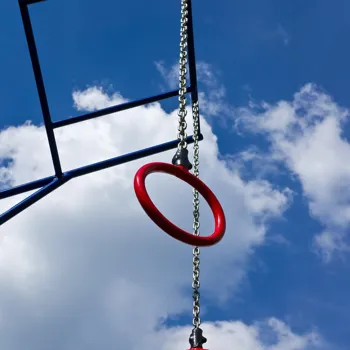Uncover the Evolution of Fitness: From Ancient Warriors to Modern Trends. Dive into the timeless pursuit of well-being!
Namaste, readers! Today, we're taking a fascinating journey back in time to explore
how exercise and fitness have evolved across different eras.
It's easy to think of gyms and Zumba classes as modern inventions, but the truth is, humans have been finding ways to stay active and healthy for millennia.
From ancient warriors honing their skills to yogis seeking inner peace, the pursuit of physical well-being is a timeless aspect of the human experience. So, grab your chai, settle in, and let's delve into the history of exercise!
Ancient yoga: holistic discipline uniting mind, body, spirit
In ancient India, around 3000 BCE, yoga emerged not just as a physical practice, but as a holistic discipline encompassing mental and spiritual well-being. The earliest forms of yoga focused on meditation and breath control, aiming to unite the mind, body, and spirit.

It was more than just exercise; it was a way of life, intertwined with philosophy and spirituality. This early emphasis on mind-body connection is something we are rediscovering today, as modern fitness trends increasingly incorporate mindfulness and stress reduction techniques.
Ancient Greeks valued physical fitness for education and citizenship
Ancient Greece considered physical fitness an essential part of education and citizenship. The gymnasium wasn't just a place to work out; it was a social and intellectual hub where men would train, debate philosophy, and participate in sports.
Thinkers like Plato and Aristotle emphasized the importance of physical activity for developing a well-rounded individual. The Olympic Games, originating around 776 BCE, were a celebration of athletic prowess and a testament to the Greek ideal of a healthy body and mind.
The Greeks understood that physical fitness wasn't just about looking good; it was about being strong, capable, and contributing to society.
Roman fitness focused on strength and practicality, influenced by Greek culture
The Roman Empire, heavily influenced by Greek culture, also valued physical training, particularly for its soldiers. Gladiatorial contests were a popular form of entertainment, showcasing the strength and skill of trained fighters.
While the Romans adopted many Greek athletic practices, their focus was more on practicality and military readiness than on the philosophical ideals of the Greeks. Bathhouses were also important social centers where people could exercise, relax, and socialize.
The Roman approach to fitness was more pragmatic, prioritizing strength and endurance for military success and public entertainment.
Physical activity in Middle Ages tied to social class, survival
During the Middle Ages in Europe, physical activity was largely dictated by necessity and social class. Peasants engaged in manual labor, their daily lives providing ample exercise.
Knights and nobles focused on martial arts, such as swordsmanship, archery, and jousting, essential skills for warfare and maintaining their social status.
Monasteries also played a role in preserving knowledge of health and wellness, with monks practicing various forms of physical activity and studying ancient texts on medicine and exercise.
Physical fitness was tied to survival and social standing, with different classes engaging in activities suited to their roles in society.
Renaissance emphasized human body study and exercise benefits
The Renaissance brought a renewed interest in classical learning and a greater emphasis on the human body. Artists and intellectuals studied anatomy and physiology, leading to a better understanding of how the body works. Exercise became more recognized as a way to improve health and vitality.
Books on physical education and training began to appear, promoting the benefits of exercise for both physical and mental well-being. This era saw a shift towards a more scientific and informed approach to fitness, laying the groundwork for modern exercise practices.
18th and 19th centuries saw rise of gymnastics and calisthenics as structured exercise systems
The 18th and 19th centuries saw the rise of gymnastics and calisthenics as formalized systems of exercise. Gymnastics, popularized by figures like Friedrich Jahn in Germany, focused on developing strength, agility, and coordination through activities like climbing, jumping, and balancing.

Calisthenics, emphasizing bodyweight exercises like push-ups, sit-ups, and lunges, became popular for their accessibility and effectiveness. These systems of exercise were often incorporated into schools and military training programs, promoting physical fitness as a national priority.
The development of gymnastics and calisthenics marked a significant step towards modern exercise, emphasizing structured training and the benefits of bodyweight movements.
AI Generated Content. Glance/InMobi shall have no liability for the content










